Thanks to the interview regarding Maison Delarocque with the general manager Franco Descalzi, we discover the production process of three champagne lines. As it has been already mentioned in the previous article, the production process is based on the Classic Method or “Champenoise” and it is followed by a small number of highly qualified experts who deal with each of its phases: from pressing the grapes, to fermentation, to bottling and to manual application of labels.
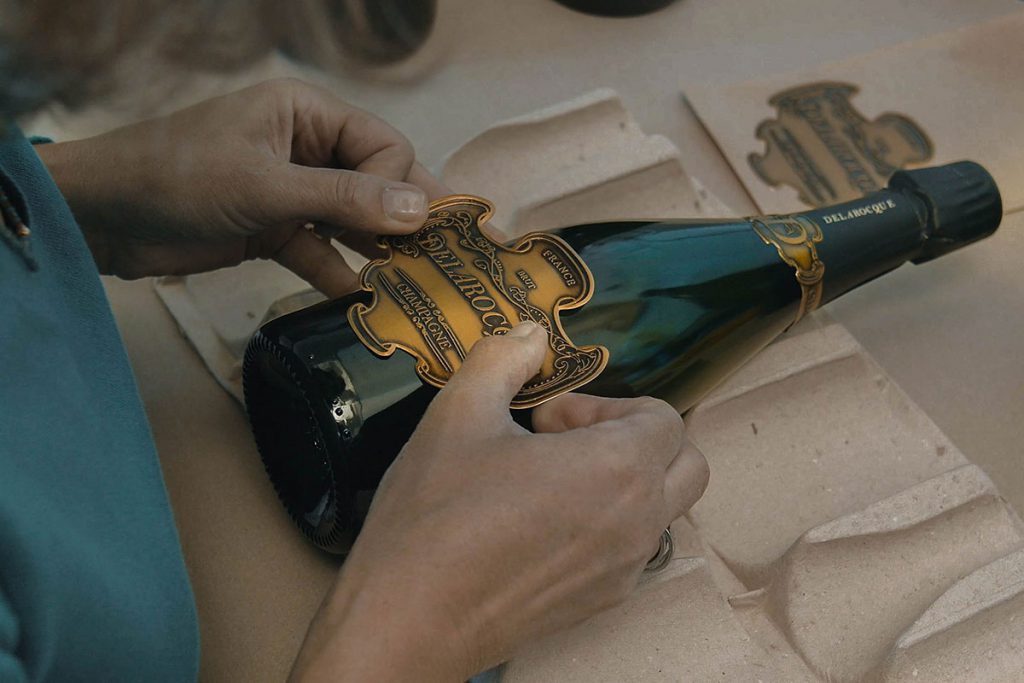
Every year during the harvest we select the best grapes through a manual and traditional harvesting method. The bunches are picked only if they have reached the correct ripeness and they are carefully placed in boxes ready to be transported to the press. This year, the harvest started on the 18th August and it ended on the 3rd September. As a matter of fact, according to the geographical features, there are different climates and therefore different times for the ripening of the grapes. When using the press, we proceed with the white vinification, which indicates the pressing that takes place in a soft way with horizontal presses paying attention not to break the stems and seeds. The result of the pressing flows by gravity into epoxy resin tanks, and then passes into temperature-controlled stainless-steel tanks for the first fermentation which lasts a few weeks. Subsequently, the wine is left to rest for at least 6 months. The next step involves the assembly, during which the reserve wine, that is the result of the harvests of previous years, is first carefully stored for several years and then associated with the grapes harvested (in this case of 2017). For what concerns the assembly of Delarocque champagne, reserve wines from 2016, 2015 and 2014 were used. In all of these three lines there is the presence of 30% of “vin de réserve” and 70% of new wine. This allows the maison to make its product recognizable over time, while maintaining the organoleptic characteristics and Delarocque’s style constant.
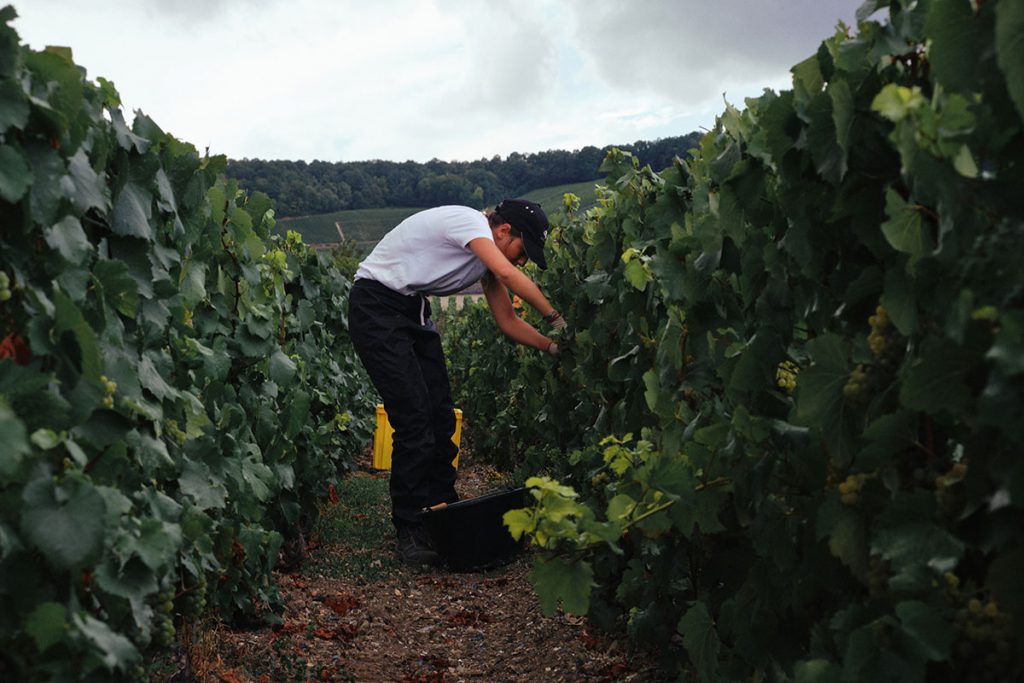
The next phase is bottling, which is followed by the addition of the “liquer de tirage”, a sugary syrup composed of yeast and sugar. A crown cap is applied to the bottles with a capsule inside to contain the lees that will settle after the “remuage”. The bottles are stacked in a dark and cool room, where the second alcoholic fermentation takes place, then the yeasts transform the sugars into alcohol and carbon dioxide. At the end of the second alcoholic fermentation, we move on to the refinement, which lasts three years. Thanks to the death of the yeasts and the deposit of their cells on the bottom, the aromas of champagne develop. Once the refinement is complete, the bottles are placed on the “pupìtre” of perforated wooden stands where they are rotated manually, in French “remuage“, and gradually tilted in order to arrange the deposit in the neck of the bottle near the cap. The next activity is the “dégorgement”, where the neck of the bottles is frozen with a coolant to trap the sediment; it is inserted into a machine that uncorks them and thanks to the internal pressure of the bottles the residue is expelled. The dosage phase follows, in which the topping up with the “liqueur d’expédition”, a mixture called MCR (rectified concentrated must) of grape concentrate, is carried out. Once the penultimate stage of the production process is reached, the bottles are capped with cork and metal cage, and then they are left to rest for other 6 months so that the wine blends perfectly with the “liqueur d’expédition”.
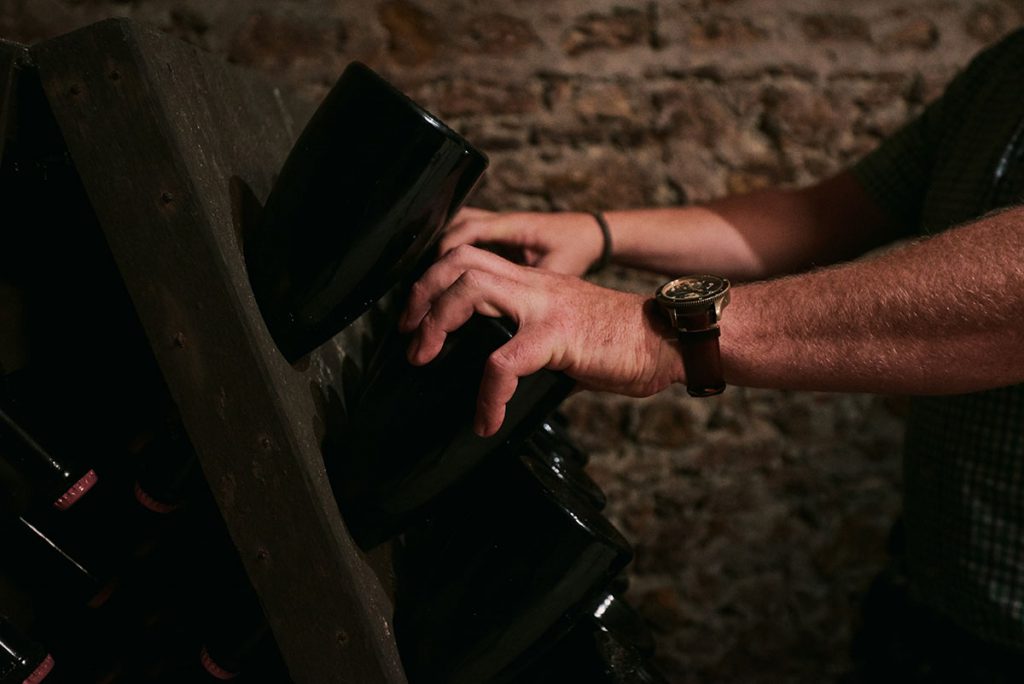
Once the champagne is ready, the handcrafted French pewter label is manually applied to the bottles. The shape of the label recalls the vine leaf and the stem, and the berries are engraved inside. Based on the colour of the label, it is possible to distinguish the type of champagne: silver for Blanc de Blancs champagne, rose gold for Rosé champagne and gold for Brut champagne. The maison is keen on underlining that the small differences between the various products should not be considered a defect, but as unique and distinctive characteristics since the manual manufacturing process brings some micro-inaccuracies that enhance the elegance and sophistication even more.
Delarocque Blanc de Blancs Champagne
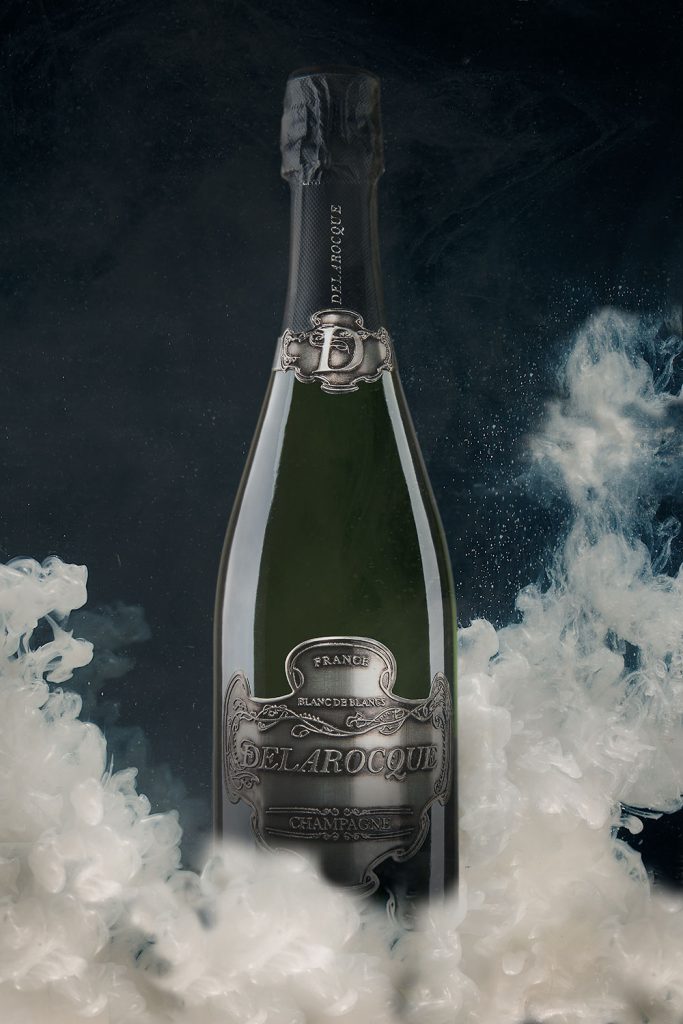
Purity and elegance are the essential features of our Blanc de Blancs produced with only Chardonnay grapes from the Côte de Blancs with clear predominance from the lands of the Grand Cru. The soil is composed of clay and limestone formed at the beginning of the Cenozoic; the land is worked without insecticides, without herbicides and fertilized with organic fertilizers. 40% of the Chardonnay grape comes from Grand Cru vines of Le Mesnil sur Oger, specifically from 13 plots located at the top, at half-sloped, at the base of the hill and from a plot of Oger located on a medium slope. The remaining 60% comes from six parcels of Montguex (Cru de l’Aube).
- Tasting notes
To the eye, it is straw yellow with luminous gold-coloured reflections that shine driven by a fine effervescence. The subtle floral notes recall the aromas of flowering trees of yellow fruit and citrus. On the palate, you notice the softness, the roundness and the great balance that reveal a pleasant, broad and generous ending on the palate with an enjoyable minerality and a fresh acidity.
- Food pairing
It is the perfect champagne for an aperitif. It goes well with fish dishes, in particular with shellfish carpaccio, scallops or a simple grilled sea bass. It is also ideal to accompany light cheeses with a delicate taste.
Delarocque Rosé Champagne
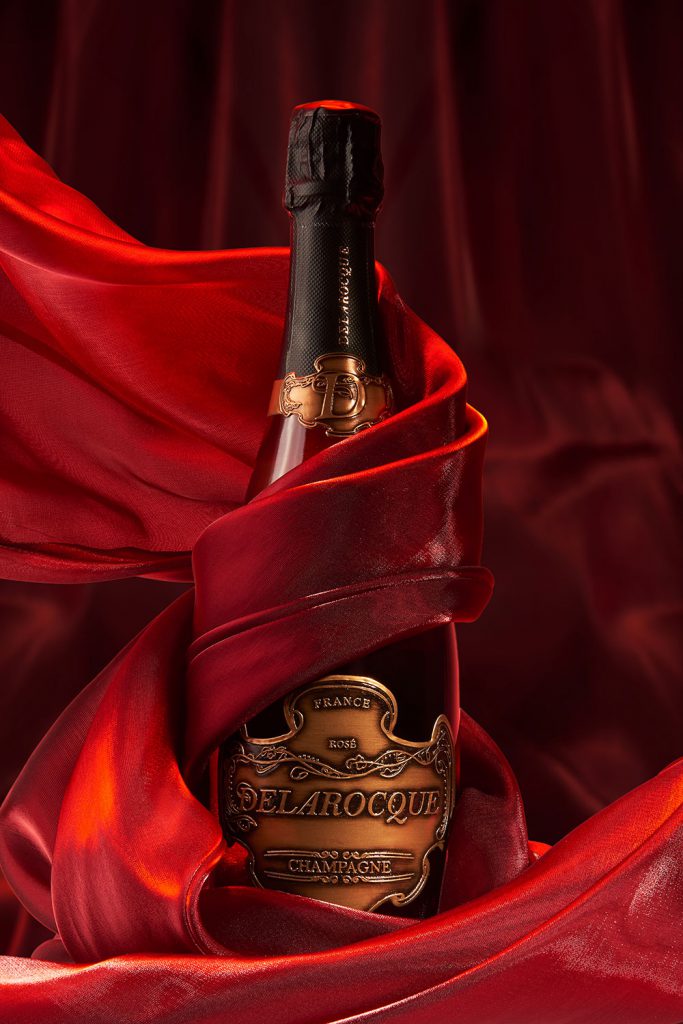
Brilliant and passionate are the distinctive features of our Rosé which comes from the perfect assembly of two different types of grapes: Pinot Noir and Chardonnay. The assembly is composed by 10% of Pinot Noir from Vertus, Premier Cru designation, coming from an average slope area and 90% of Chardonnay Le Mesnil sur Oger, Grand Cru. Viticulture is practiced in a sustainable way with HVE3 and VDC certification.
- Tasting notes
To the eye, it is perceived as antique pink in colour with amber reflections with a persistent perlage. The red fruits surprise both the nose and the taste with the aromatic intensity and spiciness of the strawberry and raspberry which coexist perfectly with light notes of black currant and give the palate a fine and silky freshness.
- Food pairing
It is ideal for an aperitif made with cold cuts or to accompany a dish like truffle veal, confit duck or wild salmon. It is also good to be accompanied by dark melting heart chocolates or macarons for a moment full of passion.
Delarocque Brut Champagne
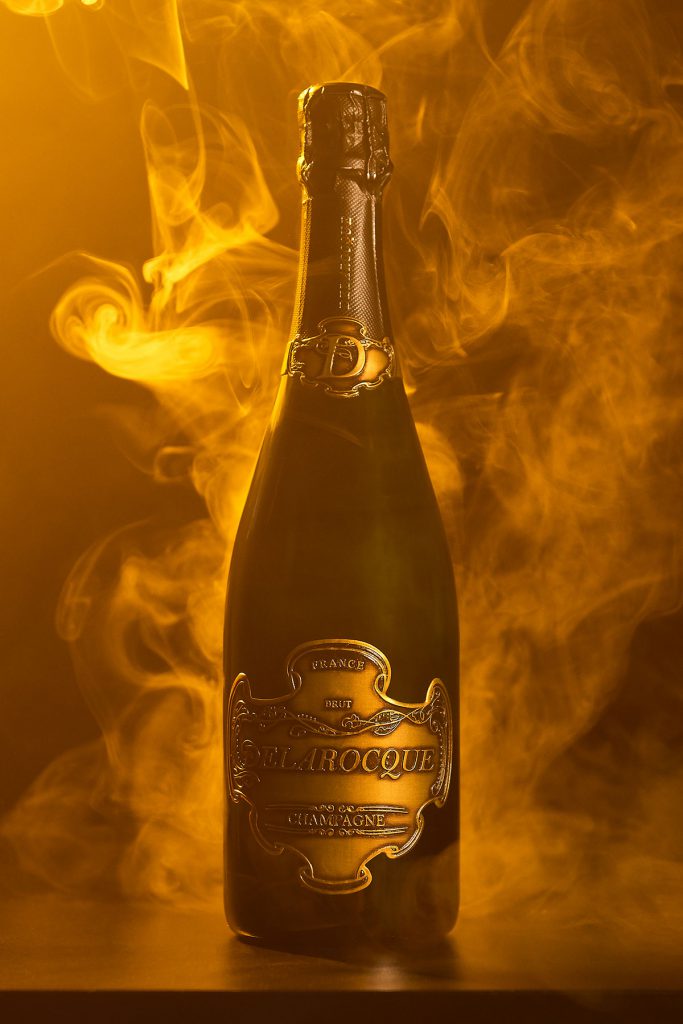
The innate and unmistakable class is the emblem of our Brut that comes from the oldest traditions of assembling champagne by bringing together the three most famous textures of the regions. The Brut was the first line created by the Delarocque. The cuvée is made up of 30% Chardonnay from Montgueux which gives minerality; from 60% Pinot Noir originating from Montgueux, Le Breuil, Fontaine sur Ay, Vertus which gives the wine body and 10% Pinot Meunier from La Chapelle-Monthodon which confers softness.
- Tasting notes
At sight, the champagne results straw-colored with emerald reflections that accompany a subtle perlage. On the palate it is both delicate and decisive thanks to the roundness of the Pinot Meunier, a beautiful expression of soft and harmonious fruit with freshness in the ending with a floral, fruity and fascinating aroma.
- Food pairing
It is the ideal combination for grilled squid and general seafood, white meats and freshwater fish. It is also the perfect match with an aperitif based on sushi and sashimi.

Interviste esclusive dal mondo del vino ed approfondimenti da chi fa del vino una ragione di vita, di business e di cultura.












